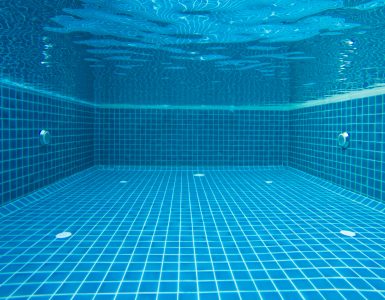The past several essays have tackled an important question: When Chaza”l made enactments that were a product of their understanding of reality (the “Metzius”), and that reality appears to have changed (“Nishtanu haTeva’im”), do those enactments continue to apply? This essay will examine this question from the perspective of Halacha u’Refua.
In the first essay of this series, we cited Tosfos in Maseches Mo’ed Katan (11a) who state that we can no longer utilize the various Refuos outlined by Chaza”l because Nishtanu haTeva’im. Interestingly, the Chavos Yair (234) considers this to be an extraordinary contention. Although we can observe in a general sense that “weakness has descended upon the world and people are no longer as strong as they used to be”, it is a far greater Chiddush to say that a specific formula devised by Chaza”l is no longer effective as a means of Refua.
However, the Chavos Yair’s assumption is far from clear. Many of the Refuos outlined by Chaza”l are either in the form of Segulos (non-medical) or are not understandable to us. If it wasn’t for the fact that Chaza”l asserted that they comprise Refua they would violate the Issur of Darchei Emori (imitating pagan practices) and other prohibitions. In fact, several Rishonim discuss at length whether they should now be forbidden due to Darchei Emori since we no longer understand these Refuos. See, for example, the fascinating and detailed Teshuva of the Rashba (1:413) in this regard. If so, Tosfos were certainly not alone in ascribing to the notion of “Nishtanu haTeva’im”.
This essay will examine the novel approach of the Chazon Ish (Y.D. 5).
The Chazon Ish begins by noting that many of the injuries, conditions, or illnesses that render an animal a Treifa (meaning that it will not survive for longer than twelve months), do not render a person a Treifa. He cites Rishonim who explain that this is because a human being is more readily cured than an animal, thus, even though these conditions do occur among people, and without intervention would cause death, medical treatment will often save their lives. If so, one can never rule with certainty that a person is a Treifa and will not survive for long, because his life may ultimately be saved by some form of medical intervention. This is true even if physicians attest that there is currently no cure for his condition because there is still a chance that someone may find a cure.
The Chazon Ish then introduces a remarkable principle:
Even with regard to Treifos of the hip and upwards (which are more serious Treifos) – we do not testify about them today [we do not assume that a person will die], because physicians perform surgery and [those with these injuries] live. And one shouldn’t be surprised by this. For in truth, it would seem that Hashem even created cures for Treifos… however, they were not revealed in every generation and in every place. Some were revealed and then forgotten. Everything was arranged by the Creator at the beginning of creation. It was then given over to the Chachamim to determine the Treifos, based on Ruach haKodesh. The laws of Treifos for all generations needed to be determined during the 2000 years of Torah, as stated in Maseches Avoda Zara (9a). See also Bava Metzia 86a which states, “Rebbi and R’ Nasan were the end of the era of the Mishna; R’ Ashi and Ravina were the end of the era of Hora’ah (Gemara).” There are no new elements of Torah [that were revealed] after them. The determination of Treifos was divinely ordained to take place exclusively during that era, thus, those diseases which were under the jurisdiction of the Angel of Death at that time, as Hashem had not yet granted an effective Refua [for them] to His creations, became the Treifos that the Torah forbade, both at that time and during later generations. For Hashem handed the laws of the Torah to the Chachamim of those [earlier] generations. It is also possiblethat the changes in nature today do not only include medicines and methods of medical treatment, but also the human body. People have less blood [today] – earlier generations required bloodletting whereas to later generations it was dangerous. Likewise, climate change and other [altered] aspects of nature, as stated by Tosfos (Avoda Zara 24b, s.v. Para). The same is true of premature births.[1] Likewise, that which is stated in Maseches Nida (31a), “this one is [located] in the position [it occupies] during relations, and this one is [located] in the position [it occupies] during relations.”[2] There are many other examples. In fact, it is possible that the surgeries performed today would not have been effective in earlier times. It is also possible that they are not effective in all climates; whether the colder climates or the warmer ones. These are the words of the Rambam (Hilchos Shechita 10:13): “All of those [conditions] that they enumerated and asserted to be a Treifa; even if it appears that some of them are no longer terminal based on the methods of medical treatment that we have and it is possible to survive them; we only have what the Chachamim enumerated, as the Pasuk states, “Based on the ruling that they give you”[3]. The Rambam’s words are confusing, for he appears to uphold the words of the physicians. But if so, how can the words of the Chachamim sit well as permanent principles? In light of that which is stated above this can be readily understood.
In other words, the Chazon Ish’s position is that the Halachic determination of Treifos was not based on an assumption that Treifos cannot be cured. There is certainly a cure for every condition. Rather, it was Hashem’s will that these cures should be hidden during certain periods of history. Also, they are dependent on changes to the body (that have taken place over time) and on differences between one place and another. However, the Halacha was set in place in the generation of Chaza”l based on the Metzius in those times. It was then fixed for all generations and is therefore not subject on changes in Refua and in human beings’ constitution.
In other words, Chaza”l certainly did not err. Also, changes can certainly occur, both through the discovery of Refuos and in the essence of nature. However, one cannot say that Halacha was established according to the dynamic Metzius, for Halacha is eternal, even though it is based upon the Metzius in the time of Chaza”l.
Ostensibly, the Chazon Ish’s words only explain why Halachos set in place by Chaza”l do not become obsolete in the face of changes in nature. However, one can certainly argue that Refuos outlined by Chaza”l that are no longer effective, or which we do not understand at all, should no longer be considered Refuos at all.
This is relevant to the question of taking medications on Shabbos. On the one hand, it is clear that even if somebody is considered a Treifa, one may desecrate Shabbos to give him medical treatment, even though Chaza”l asserted that he cannot be cured. According to the Chazon Ish, this is because Chaza”l did not state that Treifos can never be cured. However, it is also clear that one would not be permitted to desecrate Shabbos to employ one of the enigmatic Refuos outlined by Chaza”l since today, according to the best of our knowledge, they are ineffective.
This is true even though a medical expert (even if he isn’t a physician) may desecrate Shabbos to treat a patient even with experimental medical treatment (Shemiras Shabbos Kehilchasa 40), or alternative medicine, if it has been shown to be effective (Shevet haLevi 5:55). Nevertheless, if there is no natural or logical explanation as to why a form of Refua should work one cannot desecrate Shabbos to administer it.
Granted, there is a discussion among the Rishonim as to whether one may desecrate Shabbos to provide Kemiyos (amulets) and other Segulos to those in need. The Rambam (Peirush haMishnayos, Yoma 8:6) states:
One may not violate a Mitzva except for a Refua that cures in a natural way, where the cure is clear and logical and known through evidence. But for a cure by means of Segulos it is forbidden [to violate a Mitzva], for they are weak, not based on thought and logic, and the evidence for them is farfetched.
The Rashba (Shu”t 1:413) argues that it is likely that the Rambam did not refer to a Segula for Refua that Chaza”l considered to be of certain efficacy, even if we have no understanding of it. Rav Ovadia Yosef zt”l (Yabia Omer, 8:37) also cites numerous Acharonim who rule that one may desecrate Shabbos in order to administer a Segula for Refua. However, this is only true for Segulos that have gained renown for their efficacy. Today, when we do not relate to Segulos as being methods of Refua at all, one may not desecrate Shabbos to administer them (Tzitz Eliezer 8:9:8).
It is likely that the same applies to Refuos mentioned by Chaza”l that are not in the form of Segulos. In fact, it is more likely. Regarding Segulos, one may have reasoned that we should accept Chazal’s recommendation regardless of our inability to understand them and not argue that “Nishtanu haTeva’im”. Nevertheless, the Poskim ruled that we may not desecrate Shabbos to administer them. Certainly Refuos that reflected the scientific beliefs of Chaza”l’stime and that they did not consider Segulos that we now see have no scientific basis would not be permitted on Shabbos. Refraining from performing these cures does not uproot any Halacha enacted by Chaza”l.
There are several fascinating examples of this concept that relate to the subject of Sakana. The conclusions are very similar to those outlined above regarding Refua.
The Shulchan Aruch rules (O.C. 328:3) that one should desecrate Shabbos on account of an internal disease of the teeth and gums. The Mishna Berura elaborates (7-8):
And certainly if his gums are diseased – that definitely constitutes an internal disease (“Chalal haGuf”)… when it causes him a great deal of pain, and his entire body feels ill because of it, even though he may not be bedridden. This excludes a minor toothache that is not included in this…. And certainly the disease of “Tzafdina” that begins in the mouth and ends up in the gastrointestinal tract – its symptom is that when he puts something in his mouth blood comes out between his teeth. One certainly desecrates Shabbos on its account. But there is a difference between the two cases. With regard to Tzafdina, even if the patient and the physician say that Shabbos does not need to be desecrated, we say that they are not knowledgeable about this, for we have received from Chaza”l (Avoda Zara 28a) that it is a Sakana. But with regard to other toothaches that do constitute an internal illness – if nobody expresses an opinion, we do desecrate Shabbos. But if the physician or the patient say that it is unnecessary – we do not desecrate Shabbos… (Pri Megadim).
What is Tzafdina? The Gemara in Avoda Zara (28a) explains that it is caused by eating very cold wheat-based foods during the winter, or very hot barley-based foods, or a dish of small fish fried in flour with their fat and then left overnight. This disease is not known today – some suggest that it may refer to a disease caused by a deficiency of Vitamin C.
The Mishna Berura rules that although this disease is not known today and its symptom appears to be nothing more than a gum infection that no physician would consider life threatening, one may desecrate Shabbos on its account since Chaza”l had a tradition that it is a Sakana.
The Poskim discuss several other diseases and practices that Chaza”l considered a matter of Sakana that would not be considered dangerous today. Should the Halacha take modern medical knowledge into account?
Metzitza during Bris Mila is performed for purposes of Refua (see Shabbos 133b and Shulchan Aruch, Y.D. 264:3), and without it the baby is considered to be in Sakana. Therefore, Metzitza is even performed on Shabbos. Physicians for several hundred years have opined that a baby will in fact be in no danger if Metzitza is not performed. In fact, the Tiferes Yisrael rules (Shabbos 19, Boaz 1) that although we do see in several contexts that “Nishtanu haTeva’im” (see Mishna Berura 173:3, Shu”t Chasam Sofer 101 et. al.), and one might have considered relying on the physicians in this instance, as we rely on them in matters of Kares and the death penalty, even to be lenient, and they are more knowledgeable about matters of Sakana than we are, we nevertheless adhere to the conclusions of Chaza”l.
The Tiferes Yisrael then questions this conclusion. We no longer desecrate Shabbos to heat water to wash a baby before and after its Bris, or on the third day after the Bris. Although they would do so in the times of the Gemara because they considered it a matter of Pikuach Nefesh, this is no longer true today (see the Shulchan Aruch 331:9) because Nishtanu haTeva’im (Mishna Berura ibid. 31). Why do we not make a similar argument for Metzitza?
Heanswers that washing the baby is no longer considered a need at all, due to Nishtanu haTeva’im. Halacha therefore changes to reflect the new reality. But with regard to Metzitza, physicians do concede that it prevents inflammation of the penis. Since there is a medical benefit, one may desecrate Shabbos even if it is no longer understood to be an actual Sakana. (It follows that if physicians would say that there is no Sakana at all, we would not desecrate Shabbos to perform Metzitza.)
Would the Tiferes Yisrael – who concludes that if doctors no longer consider something to be a Sakana we would not treat it as such – disagree with the Pri Megadim’s ruling (cited by the Mishna Berura above) that we must continue to treat Tzafdina as a Sakana, even today? Some argue that he would not. The Pri Megadim was discussing a case in which one physician says that the patient’s gum infection does not pose a Sakana. We therefore discount his position due to our tradition from Chaza”l. But the Tiferes Yisrael was discussing a case in which there is scientific consensus that there is no Sakana. Perhaps the Pri Megadim would agree that we would not desecrate Shabbos in that case. Rav Elyashiv zt”l made a similar argument (see Shemiras haGuf v’haNefesh 1, Introduction 6).
If so, in cases where we can assume that there is no dispute between Chaza”l and contemporary science, because Chaza”l were discussing a certain Metzius which has now changed, we would certainly adhere to the physician’s position today.
The Maharam Shik (Y.D. 244) has a different perspective. He contends that since during the times of Chaza”l it was considered a matter of Sakana not to perform Metzitza, it remains a matter of Sakana unless it is clear that the Metzius has changed. Since medical science draws conclusions from studies which base their findings on the majority of people, they do not impact on questions of Pikuach Nefesh for which we do not rely upon majorities.
This contention has
broad Halachic ramifications. Though the Maharam
Shik agrees that where Chaza”l
did not express a view on a question of Sakana,
we would certainly adhere to the recommendations of physicians; if Chaza”l did consider something a Sakana, we discount the view of
physicians who disagree.
[1] [Editor’s note: There is a Machlokes in the Gemara whether a woman can give birth to a viable infant during the ninth month rather than at term (see Nida 27a). Today, this possibility is undisputed as it happens frequently.]
[2] The Gemara states that the position that a fetus occupies in the uterus depends on its gender, and this is because of the positions of the male and female during intercourse. This is clearly not the case today.
[3] Devarim 17:11














